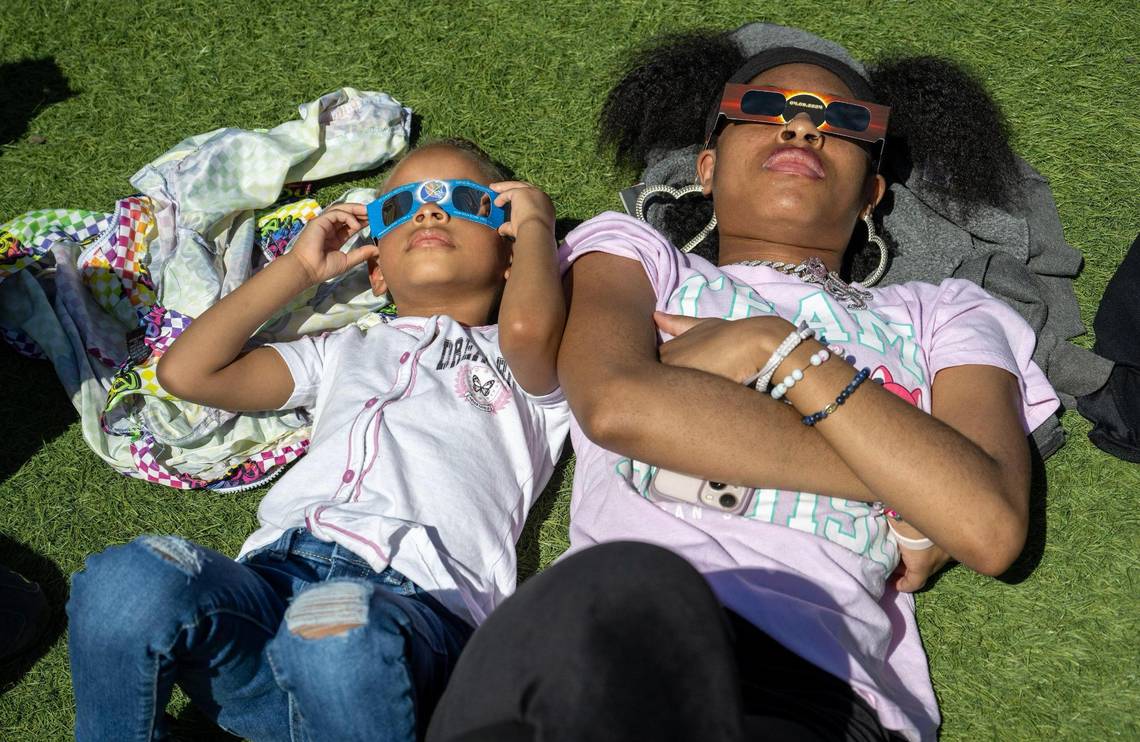Deja vu. Seven years ago, a good chunk of the Kansas City area fell under the path of totality for the 2017 solar eclipse. The metro celebrated the rare occurrence with watch parties and cheered as the moon blocked out the sun.
This year’s eclipse offered similar festivities, though this time the sun was only 89% obscured in Kansas City.
Cities in the path of totality on Monday included Cleveland; Buffalo, New York; Indianapolis; Little Rock, Arkansas; and Dallas, as well as southeast Missouri towns like Poplar Bluff and Cape Girardeau.
At Legends Outlets, a red tent offered free eclipse glasses. The lawn, near Coach, Yard House and Cold Stone Creamery, was filled with chairs, blankets and strollers around noon.
Danielle Jones, NASA’s Kansas City ambassador, wore her white lab coat — complete with a “Lady NASA” patch — and explained the significance of the event over a speaker.

“Most people will never see an eclipse in their lifetime,” she told The Star. “Most locations, it happens only (every) 358 years or so. We’ve been lucky enough in our lifetimes that we’ve gotten two now.”
And while total solar eclipses happen every year, most are over the ocean. The next total eclipse to hit the contiguous U.S. will be in 2044.
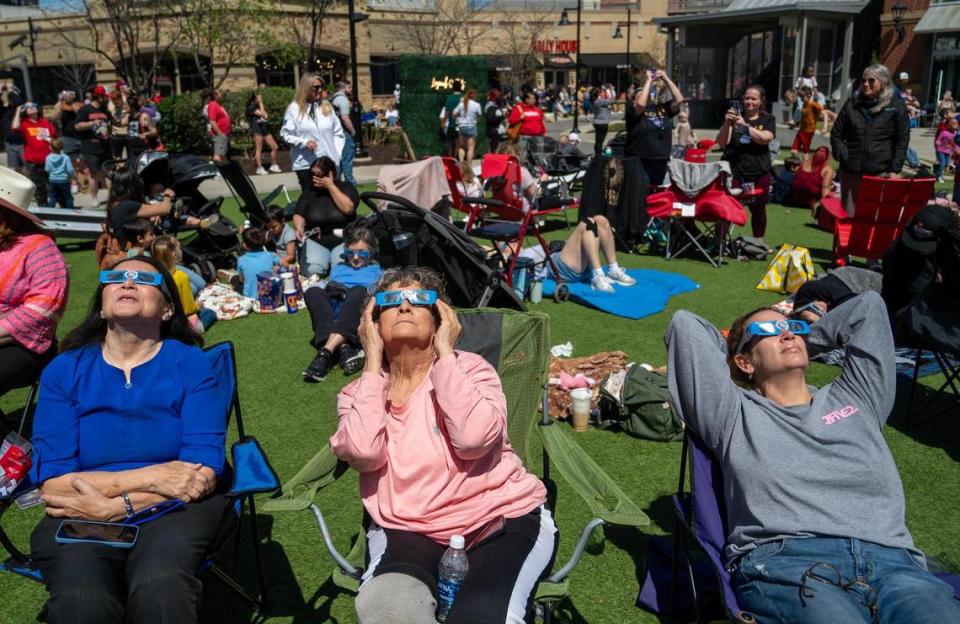

With several major cities in the path of totality, Jones said this year’s eclipse was predicted to be the biggest mass travel event in the history of the United States, according to data collected by NASA.
Just after 12:30, the moon began to creep in front of the sun.
Mike and Sheryl Turner had watched the 2017 eclipse from their Kansas City backyard. Despite the disappointment of cloud cover, they remember the feeling of awe as they saw the sky darken and felt the temperature drop.
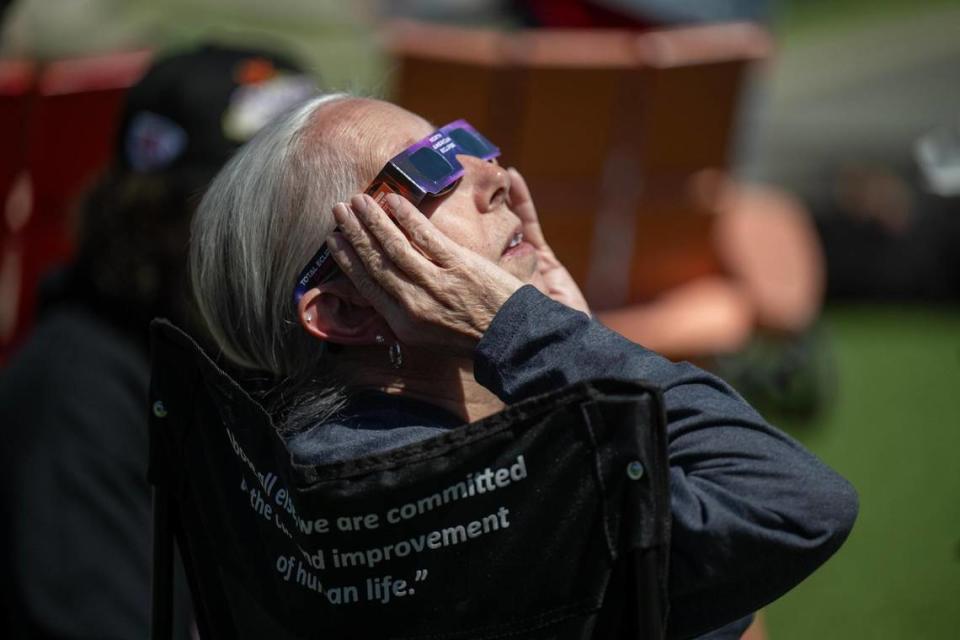

During an eclipse, birds stop singing and crickets begin chirping, thinking it’s evening.
Unlike some cities in the path of totality, Monday was nearly cloudless in the Kansas City metro.
“We’ll always remember 2017, so we wanted to be here,” Sheryl Turner said. “It’s something special.”
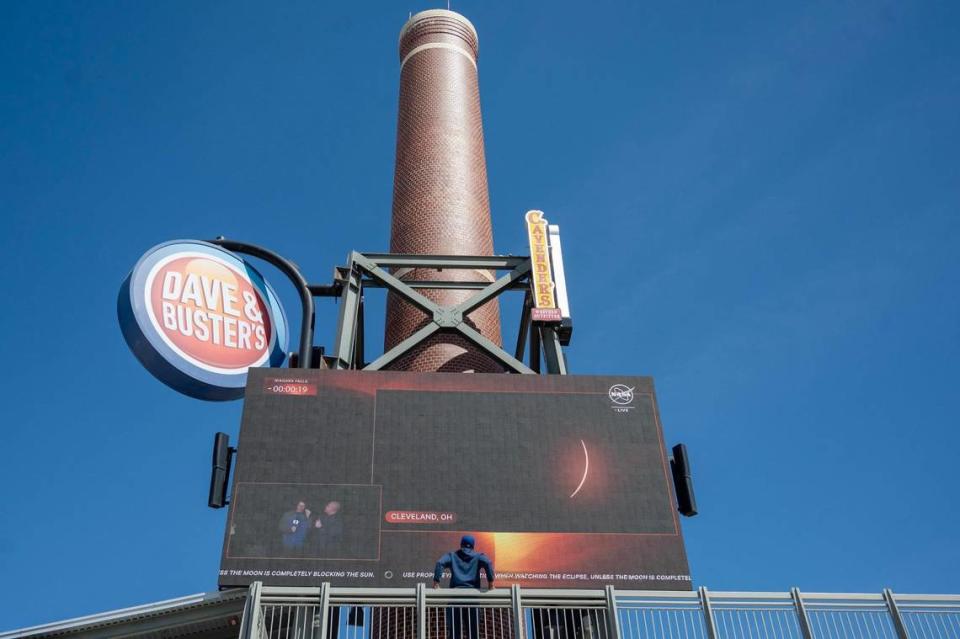

In 2017, Dwayn Grant made the short trek from Kansas City to St. Joseph, where totality would last longer than in Kansas City. Before that, he has vague memories of cutting a slit in a shoe box in elementary school to view the phenomenon.
“I like to see it get dark in the daytime — that’s what I like,” he said.
By 1:52 p.m. near totality had peaked.
The sky was slightly darkened, and the air grew cooler. Those watching through eclipse glasses saw the sun shrink to a thin crescent. Not quite the day-to-dusk shift seen in 2017, but something.
Legends Outlets’ big screen played scenes from cities in totality — Dallas and beyond. Kansas Citians oohed and ahhed as they watched.
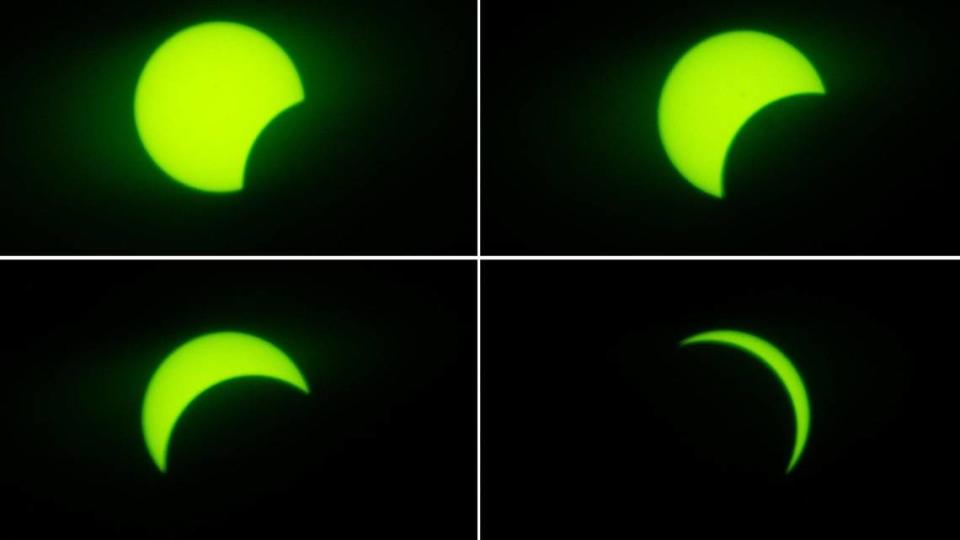

After the sun had poked back out, Carol Rewson watched the news coverage in a lawn chair with her family.
“It would’ve been nice to go where it was total, but that’s OK,” she said. “Still a beautiful day.”
